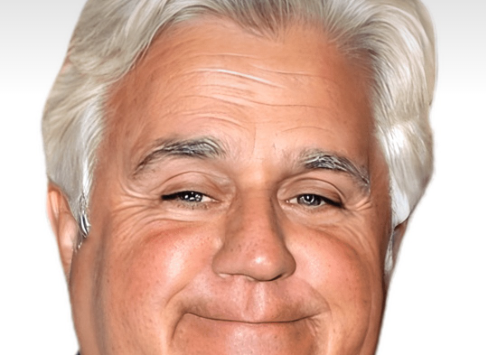
AT 74, JAY LENO PLANNING FOR DEATH, LEAVES CHUNK OF CASH TO CARS – NO ONE LIVES FOREVER!
Jay Leno is 74 now, and he’s finally acknowledging what most people spend their lives dodging: time catches everyone. The man has been an institution in American entertainment for decades—workhorse comedian, late-night king, and the guy who could talk cars with the enthusiasm of a kid discovering engines for the first time. But age has a way of shifting priorities, and Leno is making decisions that underline one blunt truth he’s not afraid to say out loud: nobody gets out of here alive.
The accidents and health scares he’s survived didn’t soften him; they sharpened him. They reminded him that even the most relentless personalities hit limits eventually. So he’s doing what practical people do—putting his affairs in order. And in Leno’s world, that means addressing not just the finances and legalities, but the massive, historic, obsessively maintained car collection that defines him as much as his comedy ever did.
He’s setting aside a significant part of his fortune specifically to protect those cars after he’s gone. Not to sell them off. Not to chop the collection into profitable pieces. To preserve them. To keep them together. To make sure they’re treated the way he treated them—with respect, curiosity, and meticulous care. Leno has always insisted he doesn’t “own” these machines so much as he’s a temporary steward of automotive history, and he’s now ensuring that stewardship continues without him.
Anyone who knows his collection understands why he’s doing it. It’s not just a garage. It’s a rolling museum that tracks more than a century of engineering. Steam cars, jet-powered experiments, one-off prototypes, million-dollar supercars, classics restored to better-than-factory condition—he has it all. And he didn’t just stash them away as trophies. He drove them. He understood them. He took them apart and put them back together again. Every car in that warehouse has a story, and most of those stories include Leno’s hands covered in grease.
This isn’t a man passing down toys. This is a man passing down a legacy—one shaped in metal, fuel, and obsession. Cars were never a hobby for him. They were a language. They were the throughline of his life, the thing that grounded him when fame, schedules, and the demands of millions pulled him in a hundred directions. When he wasn’t performing, he was in the garage. That’s where he did some of his best thinking. That’s where he felt like himself.
And even now, long after most people would’ve slowed down, he’s still maintaining the collection with the same energy he had decades ago. But he’s realistic enough to know that at some point, even he won’t be the one behind the wheel. That realism isn’t grim—it’s responsible. He’s aware of what happens when massive collections fall into unprepared hands: they get scattered, neglected, or dumped on the market piece by piece. He won’t let that happen.
The truth is, Leno has never been sentimental in a corny way. He’s sentimental in a practical way. He believes in preserving things that matter. He believes in honoring craftsmanship. And he believes that if you care about something, you don’t leave its future to chance. So he’s building a plan that outlives him, a structure that keeps his life’s passion intact. He’s making sure the engines he loved so much keep running.
His fans aren’t surprised. If anything, they’re reflective. Leno has been a constant presence in their lives—someone who made people laugh every night and showed them that success doesn’t have to mean losing your grounding. He worked nonstop. He stayed out of scandal. He treated fame like a job, not a license to act like a monarch. And through it all, the cars were his anchor.
As he prepares for what he bluntly calls “the inevitable,” he’s not indulging in melodrama. He’s just facing the truth head-on, the same way he always has. Mortality doesn’t intimidate him. It motivates him. He knows the jokes will fade, the show clips will gather digital dust, and the world will move on. That’s how it goes. But this collection—this living archive of human ingenuity—can stand the test of time if he sets it up right. And that’s exactly what he intends to do.
He’s also aware that legacy isn’t about ego. It’s about contribution. The cars aren’t just rare machines; they’re lessons. They’re historical markers. They’re reminders of what ambitious people can build when they push limits and refuse to accept mediocrity. Leno wants future generations to experience that. He wants them to see the craftsmanship. He wants them to understand the evolution of engineering. He wants them to feel the same spark he felt the first time a motor growled to life under his hands.
He’s not trying to be immortal. He’s trying to preserve something that deserves to outlast him.
Behind the blunt tone and matter-of-fact attitude, there’s something honest about all of this. Leno has lived a big life, a loud life, a busy life. He’s been everything people expected of him and more. But he’s a realist before anything else. He knows the road has a finish line. He’s just making sure the vehicles he trusted and admired make it past that line without him.
In a way, this plan of his—this move to safeguard the collection—is the most personal thing he’s ever done. He’s not doing it for applause. He’s not doing it for headlines. He’s doing it because love for something, when it’s real, doesn’t evaporate when the end approaches. It becomes even clearer, even sharper.
Jay Leno has spent his lifetime with engines in his ears, grease on his sleeves, and an encyclopedic knowledge of automotive history in his head. He’s given the world humor and entertainment, but he’s also given it something tangible—machines preserved, stories preserved, history preserved. And now he’s making sure that the roar of those engines keeps echoing long after he can’t hear it anymore.
He’s preparing for the final lap with the same steady confidence he brought to every stage, every show, every project. He’s not afraid. He’s not dramatic. He’s practical, focused, and consistent. And as he sets the foundation for what happens next, one thing is clear: Jay Leno’s legacy won’t be defined by the day he stops breathing, but by the generations who will stand in front of those cars, long after he’s gone, and feel the spark he carried his whole life.




